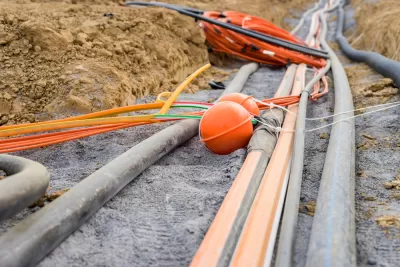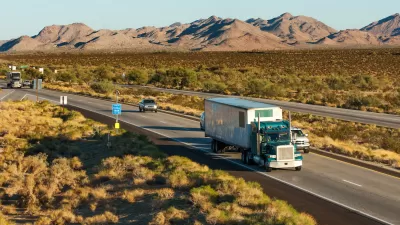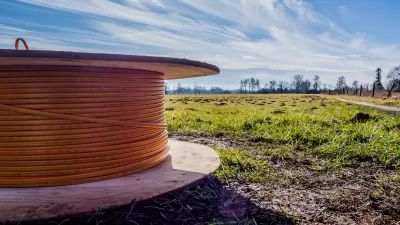Access to high-speed Internet makes a huge difference in day-to-day life. The digital divide between urban and rural communities means some rural communities could be left behind.

In many rural communities, reports Jennifer Levitz, broadband "lags behind in both speed and available connections."
Levitz begins an article explaining the rural digital divide by describing the example of Washington County, Missouri, where customers pay $170 million a month for "satellite internet service too slow to upload photos, much less conduct business." According to Levitz, "only a fraction of Washington County’s 25,000 residents, including Ms. Johnson, have internet service fast enough to stream videos or access the cloud, activities that residents 80 miles away in St. Louis take for granted."
Levitz expands the scope of this examination of infrastructure by writing that poor rural Internet is "both a cause and a system" of the "travails" of small-town America. "About 39% of the U.S. rural population, or 23 million people, lack access to broadband internet service—defined as 'fast' by the Federal Communications Commission—compared with 4% of the urban residents," writes Levitz. There are plenty of examples for how poor Internet service negatively impact equality of life, from schools to 911 dispatch centers to hospitals to the entrepreneurial efforts of private citizens.
The article includes a lot more detail on the difficulties of building-out high-speed internet infrastructure to all the rural communities around the country.
FULL STORY: Rural America Is Stranded in the Dial-Up Age

Alabama: Trump Terminates Settlements for Black Communities Harmed By Raw Sewage
Trump deemed the landmark civil rights agreement “illegal DEI and environmental justice policy.”

Study: Maui’s Plan to Convert Vacation Rentals to Long-Term Housing Could Cause Nearly $1 Billion Economic Loss
The plan would reduce visitor accommodation by 25% resulting in 1,900 jobs lost.

Planetizen Federal Action Tracker
A weekly monitor of how Trump’s orders and actions are impacting planners and planning in America.

Wind Energy on the Rise Despite Federal Policy Reversal
The Trump administration is revoking federal support for renewable energy, but demand for new projects continues unabated.

Passengers Flock to Caltrain After Electrification
The new electric trains are running faster and more reliably, leading to strong ridership growth on the Bay Area rail system.

Texas Churches Rally Behind ‘Yes in God’s Back Yard’ Legislation
Religious leaders want the state to reduce zoning regulations to streamline leasing church-owned land to housing developers.
Urban Design for Planners 1: Software Tools
This six-course series explores essential urban design concepts using open source software and equips planners with the tools they need to participate fully in the urban design process.
Planning for Universal Design
Learn the tools for implementing Universal Design in planning regulations.
Caltrans
Smith Gee Studio
Institute for Housing and Urban Development Studies (IHS)
City of Grandview
Harvard GSD Executive Education
Toledo-Lucas County Plan Commissions
Salt Lake City
NYU Wagner Graduate School of Public Service





























